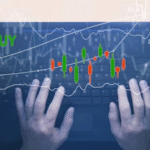
Image © Adobe Images
The U.S. Dollar is dominant with the currency trading higher against all of its major competitors with USD/JPY hitting its strongest level in 11 months.
10Y US Treasury yields soared to the highest level since 2011, breaching 3.19% on the back of growing U.S. economic optimism and upbeat comments from the Federal Reserve’s Chairman Powell.
The US ISM non-manufacturing index rose to a 21-year high of 61.1 in September, consistent with above potential US real GDP growth. Furthermore, the ADP measure of private payroll employment in September points to upside risk to Friday’s employment report.
The Australian Dollar appears to be struggling the most out of its G10 peers in this environment, however Sterling has also enjoyed a decent 24 hours and was able to put up the most resistance to the Dollar’s onslaught.
GBP

The data calendar is quiet and today Sterling will be driven by external factors while markets are left to mull the political landscape now the Conservative party conference is done.
In summary, the conference went without any major hiccup and Theresa May’s strong performance in her closing address suggests her grip on the leadership is not under threat, anytime in the near-future at least.
This provides some sense of stability for markets, and is therefore GBP-positive on the margin.
There is no risk of a second-referendum, and we see very little chance the Conservative party will rebel at any final deal May puts before them lest they hand the advantage to the opposition Labour Party.
All eyes now turn to a meeting of European leaders at a dinner on October 17 when they review the state of negotiations with the UK.
“In October we expect maximum progress and results in the Brexit talks. Then we will decide whether conditions are there to call an extraordinary summit in November to finalise and formalise the deal,” European Council President Donald Tusk said at the Salzburg informal summit.
October was at one point the deadline for talks, but a new date in November was announced in Salzburg. But, as Tusk points out, the time for results are upon us. Expect market nerves to remain piqued over the next week.
“Brexit remains the key driver for the GBP and uncertainty related to the outcome is likely to keep the GBP volatile and undervalued in the coming months,” says Mikael Olai Milhøj, a foreign exchange strategist with Danske Bank.
USD

The dominant Dollar sees further data points today with Initial Jobless Claims due out at 13:30 B.S.T. where markets are looking for a reading of 211K to be released.
Watch FOMC member Quarles speak at 14:15 for any further guidance on where Federal Reserve policy might be headed. A number of Fed officials have spoken over recent days and many of them seem see significant upside risk to inflation.
Federal Reserve Chair Powell believes that the expansion can continue for quite some time.
The Fed is certainly playing USD-positive at present.
However, not everyone is convinced the Dollar can continue to steam-roll its way forward.
“We do not expect USD to make new cyclical highs. US inflation pressures remain contained around the Fed’s 2% target (chart 2). This suggests the Fed is not about to raise interest rates more aggressively than is currently discounted,” says Elias Haddad, Senior Currency Strategist with Commonwealth Bank of Australia.
EUR

The data calendar is empty and we would imagine the EUR/USD will remain driven by 1) any developments on the Italian budget and 2) Dollar strength.
On the former, the final 2019 Financial and Economic Document (DEF) is still to be released which creates the potential for further headlines on the matter to emerge and potentially move markets.
On the latter, EUR/USD has now broken below 1.15 which suggests a technical deterioration in the short-term.
“EUR/USD is on the defensive and has eroded the 1.1510/08 key support. This de stabilises the chart and allows for losses to 1.1411, the 78.6% retracement. This is seen as the last defence for the 1.1330 200 week ma and the 1.1301 recent low. We note that the Elliott wave count is still labelling this as corrective only and ideally we will see 1.1411 hold and provoke reversal,” says Karen Jones, a technical analyst with Commerzbank.
CAD

Ivey PMI data is due today at 15:00 B.S.T. and markets will be looking for the result to provide a steer on the state of the country’s economy.
The Ivey Purchasing Managers Index (PMI) is an economic index which measures the month to month variation in economic activity as indicated by a panel of purchasing managers from across Canada, and is prepared by the Ivey Business School. Using end of the month data it covers all sections of Canada’s economy.
Markets are forecasting a reading of 62.3 for September; any disappointment could well put pressure on CAD ahead of tomorrow’s employment report and International trade data are released.
AUD

The Australian Dollar continues to be one of the market’s laggards according to relative performance data, with the currency down against all the majors aside from a merger 0.43% gain on the NZ Dollar and Swedish Krona.
The currency also lags in the one month and one week time frames and is the worst performer today, at the time of writing.
The trend here is clearly entrenched, and it is hard to see any catalyst that might snap the losses at this point.
But it’s not all bad. Data overnight showed a wider-than-expected trade surplus in Aug (AUD1604mn versus consensus estimates for 1450mn), but this did little for the currency’s cause.
“The trade balance is holding up well thanks to strong commodities prices and export volume growth. Of note, exports to China increased 6.5%m/m, recovering some of the lost ground in July,” notes Sue Trinh with RBC Capital Markets in Hong Kong.
“Australia’s favourable balance of payments backdrop and relatively high terms of trade will cushion AUD/USD downside.Australia’s current account deficit of 2.9% of GDP is more than offset by net foreign direct investment flows to Australia totalling 3.2% of GDPin Q2.This is indicative of robust underlying demand for AUD,” adds CBA’s Haddad.
NZD

The New Zealand Dollar remains out of favour thanks to a combination of strong U.S. data, softer global economic activity, a modest pick-up in emerging market financial stress and global interest rate dynamics.
Add to this mix a softening in domestic business confidence and we get the key reasons for the currency’s underperformance.
“We’re approaching levels that could prove pivotal,” says a note from ANZ Bank. “ith US data strong overnight and Fed speakers sticking to the script, kiwi broke through support and is approaching its year-to-date low near 65 cents. This level is shaping as reasonably critical. We expect it to hold for now. However, a break would open up the potential for further significant downside.”
Advertisement
Lock in Sterling’s current levels ahead of potential declines: Get up to 5% more foreign exchange for international payments by using a specialist provider to get closer to the real market rate and avoid the gaping spreads charged by your bank when providing currency. Learn more here




















